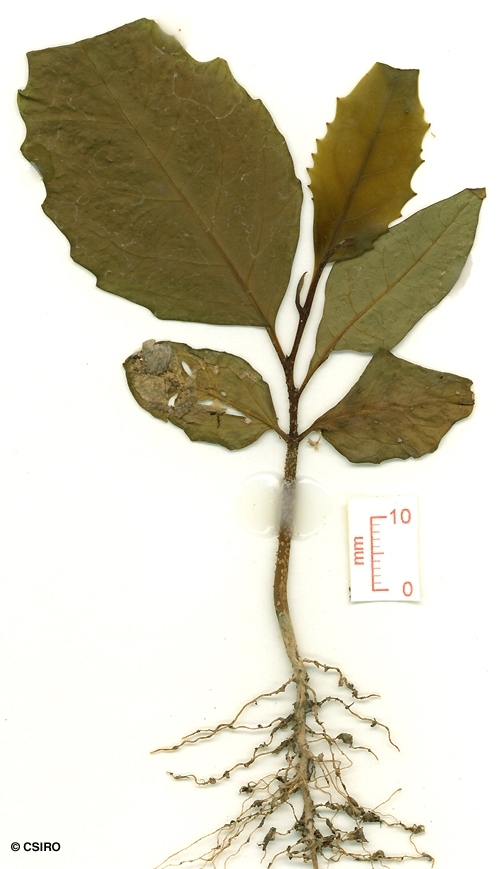Australian Tropical Rainforest Plants - Online edition
Pennantia cunninghamii Miers



Miers, J. (1852) Annals and Magazine of Natural History ser. 2, 9 : 491. Type: New South Wales, County of Camden. (v.s. in herb. Hook. spec.in flor. Illawarra, McArthur-sp. in fruct. Five Islands district, A. Cunningham).
Beech, Brown; Brown Beech
Fine oak grain in the wood and a similar pattern in the inner blaze. Blaze darkens to orange-brown on exposure. Brown brittle textured stripes may be visible in the outer blaze.
Leaf blades about 10-16 x 5-8 cm. Glands or foveole-like structures on the underside of the leaf blade at major forks of the lateral veins. Similar structures may also occur along the midrib. Glands or foveoles often form raised lumps on the upper surface.
Cotyledons about 20-25 x 15 mm. At the third or fourth leaf stage; leaf blade margin obviously toothed. At the tenth leaf stage: leaf blade margin sparsely toothed or with a few inconspicuous teeth, midrib depressed on the upper surface; lateral veins forming loops inside the blade margin. Stem marked by numerous pale lenticels. Seed germination time 35 days.
Cyanogenic glycosides have been reported in the leaves and bark of this species. No field cases of poisoning have been recorded. Everist (1974).





